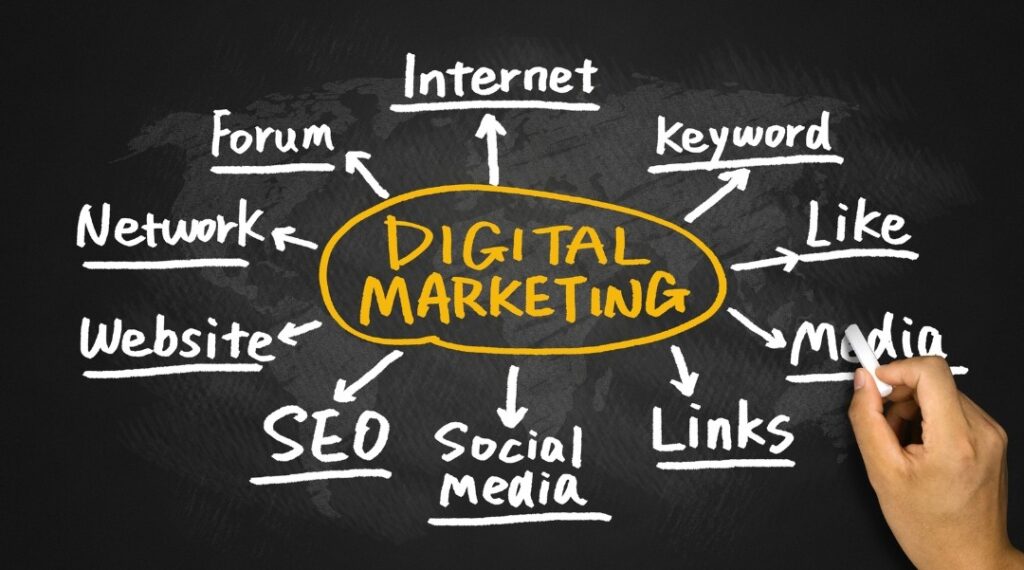How Content Creation Tools like Adobe Photoshop and Video Editing are Shaping the Future of Online Engagement
In the ever-evolving landscape of digital marketing, social media continues to be one of the most powerful tools for reaching, engaging, and converting audiences. With billions of users actively scrolling, liking, sharing, and watching every day, platforms like Instagram, TikTok, Facebook, YouTube, and LinkedIn are essential spaces for brands to build visibility and drive sales.
But successful social media marketing goes far beyond simply posting pretty pictures or clever captions. It’s a fusion of strategy, analytics, branding, and—perhaps most importantly—compelling content creation. That’s where tools like Adobe Photoshop, video editing software, and other creative platforms come into play. These digital tools allow marketers, creators, and businesses to craft engaging visual content that cuts through the noise and speaks directly to their target audience.
In this article, we’ll dive deep into the role of social media in digital marketing, explore the content creation tools that power high-performing campaigns, and show how mastering these tools can make a huge difference in today’s competitive market.

Why Social Media Matters in Digital Marketing
Let’s begin by understanding why social media is such a crucial pillar of any digital marketing strategy.
Key Benefits of Social Media Marketing:
- Audience Reach: Billions of active users across multiple platforms.
- Brand Visibility: Establishing identity and personality with visual storytelling.
- Targeted Advertising: Precise ad placement based on behaviour, location, and interests.
- Community Building: Engaging directly with users to foster loyalty.
- Traffic & Sales: Driving visitors to websites, landing pages, or online stores.
| Platform | Monthly Active Users (2025 est.) | Best For |
|---|---|---|
| 2.4 Billion | Lifestyle, fashion, visual branding | |
| TikTok | 2.1 Billion | Short-form video, youth engagement |
| 2.9 Billion | Ads, groups, mature audiences | |
| 1.1 Billion | B2B, career & professional content | |
| YouTube | 2.6 Billion | Long-form video, tutorials, branding |
| 500 Million | DIY, decor, fashion, and inspiration |
The success of digital marketing today hinges not just on being present on these platforms—but on using them strategically, with high-quality, purpose-driven content.
The Power of Visual Content
Humans are visual creatures. Studies show that we process visuals 60,000 times faster than text. In the context of social media, this means that content with strong visual elements—photos, graphics, videos—consistently outperforms plain text.
This is where Adobe Photoshop, video editing, and other design tools become invaluable.
Types of Visual Content That Drive Engagement:
- Photos and graphics: Edited with tools like Adobe Photoshop, Canva, or Lightroom.
- Short-form videos: TikTok/Reels edited with CapCut, Premiere Pro, or iMovie.
- Stories and carousels: Multi-slide content to tell visual stories.
- Memes and infographics: Informative or humorous content that’s easily shareable.
- Live content: Real-time engagement through lives or webinars.
Effective content creation balances aesthetic appeal with brand consistency and platform optimisation.
Adobe Photoshop: A Cornerstone Tool in Content Creation
When it comes to creating stunning visuals for social media, Adobe Photoshop remains one of the most powerful and versatile tools on the market. From refining product photos to designing eye-catching graphics and banners, Photoshop is a staple in every digital marketer’s toolkit.
How Adobe Photoshop Supports Social Media Marketing:
- Image enhancement: Adjust lighting, remove blemishes, refine colours.
- Custom layouts: Create reusable templates for Instagram posts, stories, and ads.
- Brand consistency: Apply filters, fonts, and colour palettes aligned with brand identity.
- Collage and mockups: Combine multiple images, add devices or product mockups.
- Social media ad creation: Design creative assets for paid campaigns.
Photoshop’s integration with other Adobe tools like Illustrator and Lightroom also allows for a more seamless creative process—ideal for teams managing multiple social accounts or campaigns.
Video Editing and Social Media: The New Power Couple
Video content dominates engagement on social media. In fact, short-form videos are currently the highest-performing type of content on platforms like TikTok, Instagram Reels, and YouTube Shorts.
But producing high-quality videos doesn’t require a full film crew. With the right video editing tools and some creativity, anyone can create polished, impactful content.
Popular Video Editing Tools for Social Media:
| Tool | Best For | Skill Level |
|---|---|---|
| Adobe Premiere Pro | Professional video editing | Advanced |
| CapCut | Quick TikTok/Instagram edits | Beginner–Intermediate |
| iMovie | Mac-based editing | Beginner |
| DaVinci Resolve | Colour grading and VFX | Advanced |
| InShot | Mobile video creation | Beginner |
Key Features to Use:
- Transitions and cuts: Maintain attention and flow.
- Captions/subtitles: Improve accessibility and engagement.
- Effects and overlays: Add branding, mood, or humour.
- Sound design: Music, voiceovers, and effects to evoke emotion.
- Aspect ratios: Optimise for different platforms (e.g., 9:16 for reels).
Whether you’re demonstrating a product, telling a brand story, or creating an entertaining skit, video editing enables you to captivate audiences and boost your organic reach.
Building a Social Media Strategy with Content Creation at Its Core
While having the right tools is essential, they need to be part of a strategic framework. Here’s how you can build a robust social media marketing plan that centres around high-quality content.
Step-by-Step Social Media Strategy:
- Define Your Goals
Are you looking to increase brand awareness? Generate leads? Drive website traffic? - Identify Your Audience
Use social insights and persona development to understand who you’re speaking to. - Choose Your Platforms
Select platforms where your audience spends their time and where your content type will thrive. - Create a Content Calendar
Plan posts, promotions, and themes weekly or monthly. - Use the Right Tools
Integrate Adobe Photoshop for graphics, video editing tools for reels, and scheduling tools like Buffer or Hootsuite. - Track Performance Metrics
Monitor likes, shares, comments, click-throughs, and conversions to see what’s working.
Content Creation Best Practices for Social Media
To ensure that your content not only looks good but also performs well, follow these industry-backed tips:
Image & Graphic Design:
- Use high resolution images optimised for web
- Maintain a consistent colour palette
- Add branding elements (logos, handles, website URLs)
- Use whitespace to keep designs clean and readable
Video Editing:
- Hook viewers in the first 3 seconds
- Add captions for silent viewers
- Keep videos short and dynamic
- Maintain branding (colours, music, typeface)
Posting and Scheduling:
- Follow platform-specific best times for posting
- Keep a balance between promotional and value-added content
- Test different formats and creatives
- Use A/B testing for ad creatives
The Role of the Social Media Manager
Behind every successful social media campaign is a skilled Social Media Manager or Digital Content Creator who knows how to turn insights and ideas into scroll-stopping posts. These professionals often wear multiple hats, combining copywriting, design, video editing, analytics, and community management.
Key Responsibilities:
- Content planning and calendar management
- Adobe Photoshop and video editing for content creation
- Platform management and audience engagement
- Influencer and partnership collaborations
- Performance tracking and reporting
As brands continue to invest more into social media, the demand for professionals skilled in tools like Photoshop and Premiere Pro has risen significantly.
Integrating Paid Ads and Organic Content
An effective digital marketing strategy uses both organic (unpaid) content and paid advertising. With eye-catching creatives designed using Photoshop or edited video snippets, you can run paid campaigns that reach thousands—even millions—of users.
Popular Ad Types:
- Facebook/Instagram Image Ads
- Instagram Reels Ads
- TikTok Spark Ads
- YouTube Pre-roll Ads
High-performing paid ads are often rooted in authentic, well-edited content that looks and feels native to the platform—especially video.
Tools That Support the Social Media Content Workflow
| Tool Name | Purpose | Skill Level |
|---|---|---|
| Adobe Photoshop | Graphic design and image editing | Intermediate–Advanced |
| Adobe Premiere Pro | Video editing and motion graphics | Advanced |
| Canva | Simple, drag-and-drop design | Beginner |
| CapCut | Short-form video editing | Beginner |
| Hootsuite/Buffer | Post scheduling and analytics | Intermediate |
| Trello/Notion | Content calendar management | Beginner–Intermediate |
Conclusion: The Content Creation Era of Social Media Marketing
In the fast-paced world of digital marketing, social media is both a battleground and an opportunity. Success depends not only on what you post, but how well that content is crafted. With tools like Adobe Photoshop for visual storytelling and video editing platforms for dynamic content creation, marketers today have more creative power than ever before.
But with great power comes great competition. The brands that rise above the noise are the ones who master their tools, understand their audience, and invest in quality content.
Whether you’re an aspiring social media marketer or a small business owner looking to up your digital game, understanding and mastering the art of content creation is no longer optional—it’s essential.

